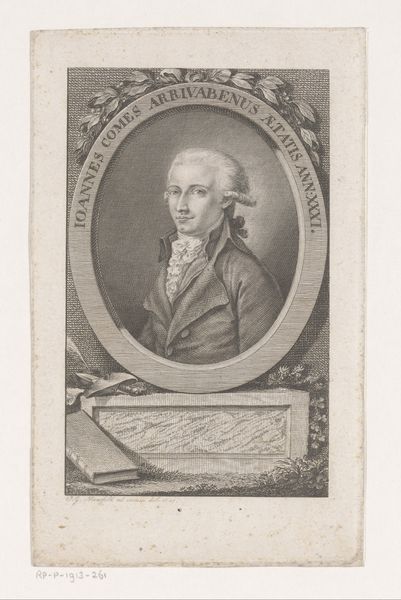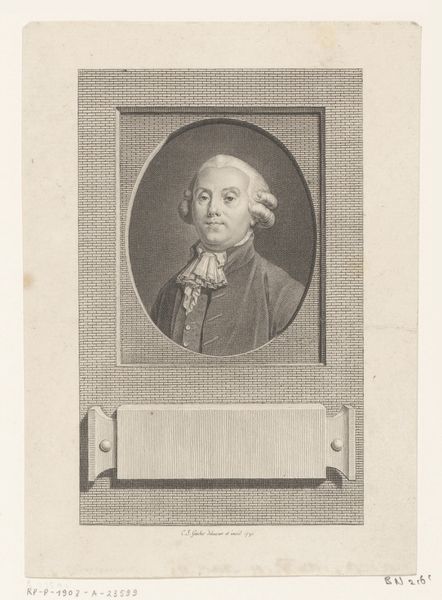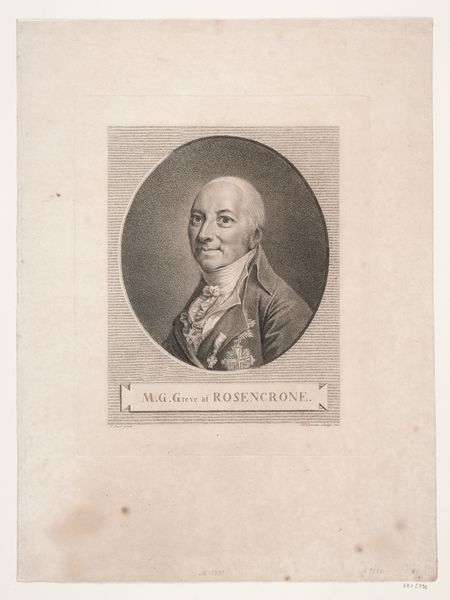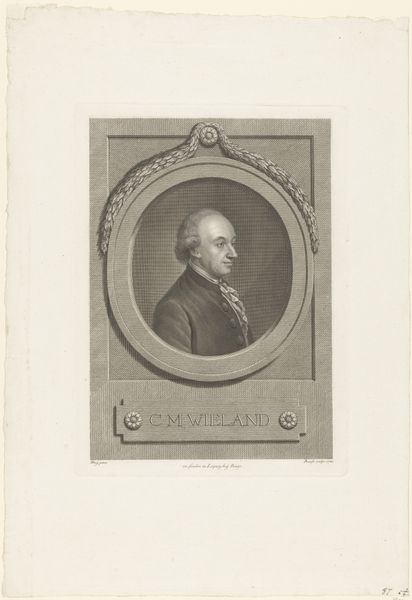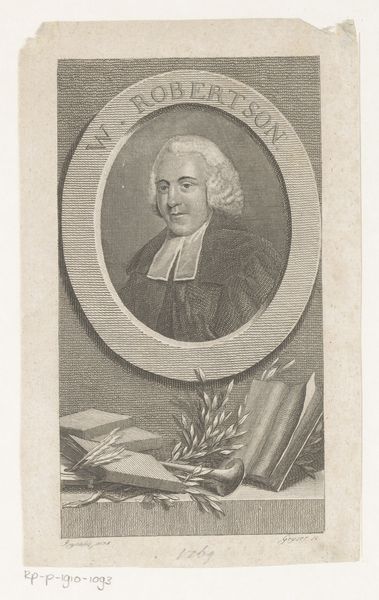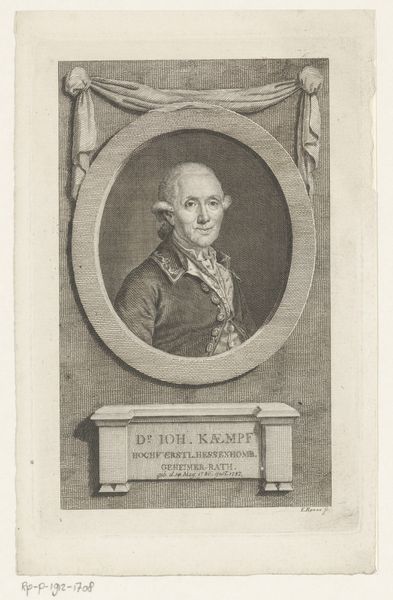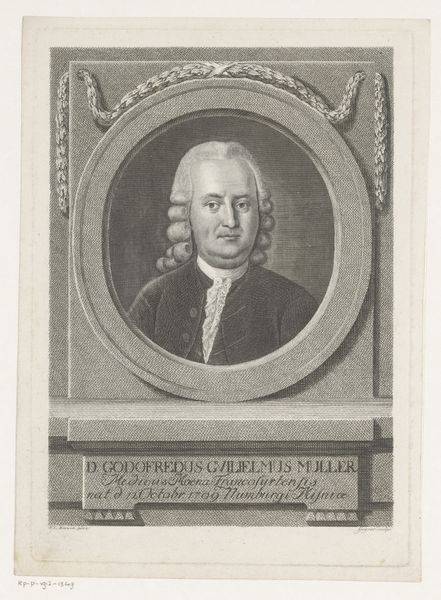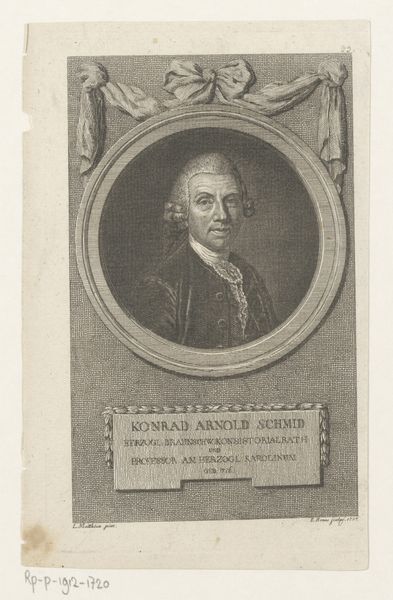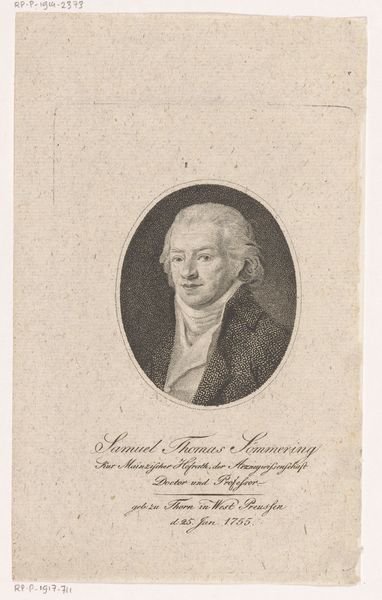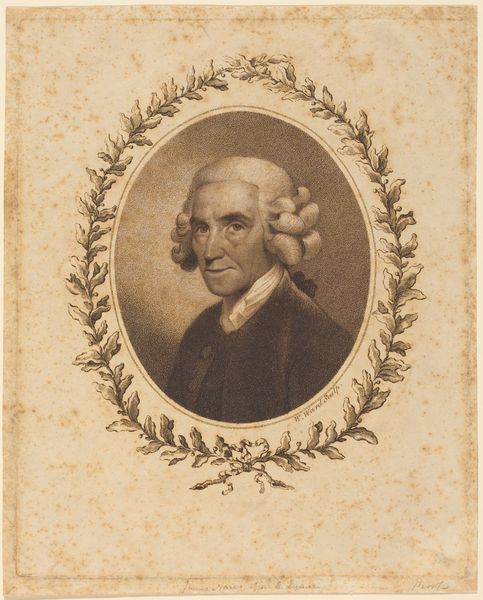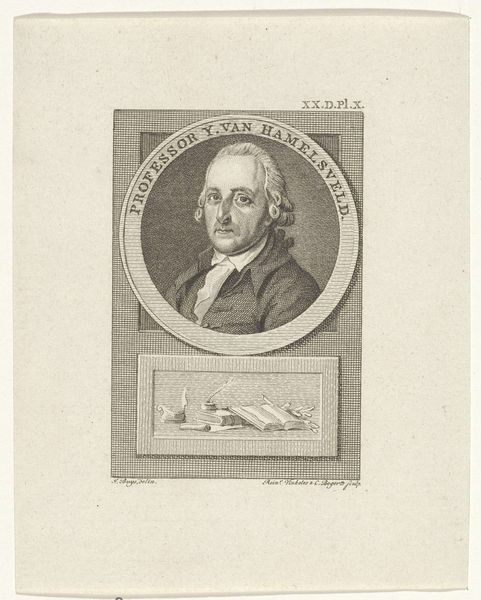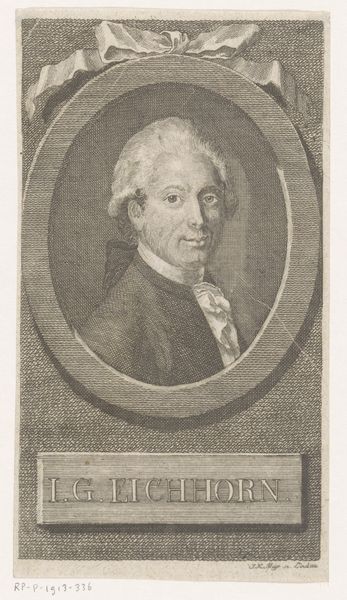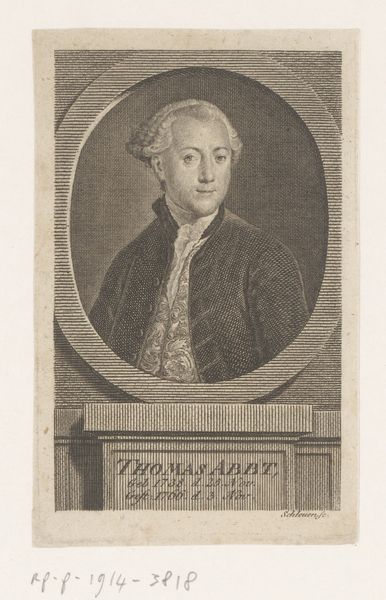
print, engraving
#
portrait
#
neoclacissism
# print
#
19th century
#
engraving
Dimensions: height 165 mm, width 101 mm
Copyright: Rijks Museum: Open Domain
Curator: Considering this print, a "Portret van Sigismund Friedrich Hermbstaedt" created between 1770 and 1833 by J.S.L Halle, I'm immediately drawn to the question of production. How would you begin to analyze it? Editor: Well, first off, it's an engraving, right? It feels so formal and proper, and obviously, somebody important. What do you see in terms of its...meaning, I guess? Curator: As a materialist, I’m less interested in a singular "meaning" and more with how its meaning was constructed. An engraving indicates a multi-step process involving a skilled artisan, metal plates, specialized tools, and likely, a print workshop employing numerous individuals. We could consider their economic conditions and the value chain involved. Consider the cost to produce, disseminate, and the intended audience for these portraits. Who could afford it and why? Editor: So you are suggesting focusing on the engraver and their socio-economic world to start? Curator: Exactly! This image circulated, acting almost as a type of currency within certain social circles. We could discuss what the existence of prints reveals about the culture and the social value of individuals at the time. What was being 'consumed' when the print of Hermbstaedt circulated, and by whom? Editor: That's fascinating. So it’s not just *about* Hermbstaedt, but about who *owned* it. I always think about "high art" versus craft, and how engravings fall in between. Curator: Precisely! What labor went into this “high art," and how was that labor compensated or not? Thinking about production helps break down traditional hierarchies. Now I'm seeing this image less as a portrait and more as evidence of larger economic and social systems. Editor: I am definitely seeing that too; thanks to that lens, I understand the piece's role so much better now.
Comments
No comments
Be the first to comment and join the conversation on the ultimate creative platform.
